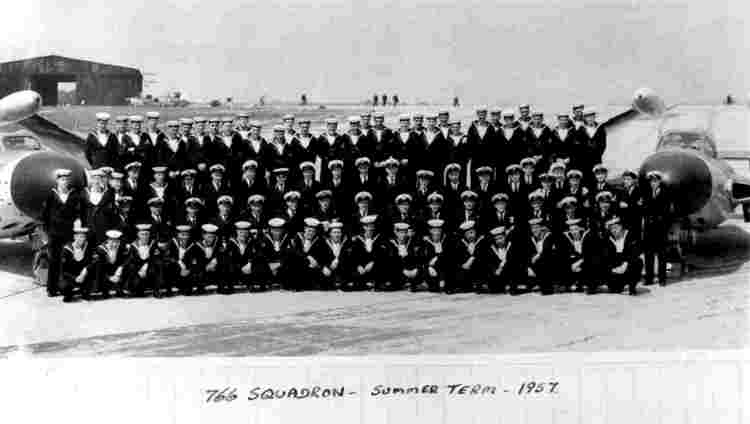Merryfield (Isle Abbots), Somerset
ST342186. 4 miles NW of Ilminster
In flat country near the ancient town of Ilminster a site for a bomber station was selected during 1942, and the land purchased from the trustees of the Baptist Church at the end of the year. Work started immediately on a typical three-runway layout with extensive dispersal and accommodation sites. The majority of the living sites lay between Midges’ Farm and the small village of Ilton.
Good progress was made on the airfield despite problems caused by an old canal which crossed the site, and named Isle Abbots, it was transferred to 70 Group control in April 1943 for administration and development as a USAAF base. The name was changed to Merrvfield on September 14 1943 when the airfield was approaching completion.
Merrvfield was opened on February 9 1944 and Americans started to arrive in large numbers. During April the four squadrons of the 441st TCG. 50th TCW, IXth Troop Carrier Command moved in from Langar, Notts, with Douglas C-47s and Hadrian gliders. Training for D-Dav commenced immediately and by the end of May the 441st was proficient in marshalling its gliders and tugs on the runway so that rapid hook-ups could be achieved and thus produce a concentrated flow of combinations. Together with the other 13 TCGs ol lXth Troop Carrier Command, the 441st delivered the 82nd and 101st US Airborne Divisions close to St Mere Eglise on D-Day to seize road/rail bridges and other key points. They followed up with resupply for the next few days and in July the 61st Field Hospital was established at Merryfield. A large tented hospital area and ambulance park was constructed close to the technical site in the south-east corner of the airfield. 813 Air Evacuation Transport Squadron started flying in American casualties from the Continent, and although the airfield was transferred to 10 Group. Fighter Command, in August the Americans remained until November 1944.
The airfield was taken over by 47 Group. Transport Command on November 30, the nucleus of a new transport squadron, 238, having arrived a week earlier. intended for Albernarles, it was actually equipped with Dakotas for work in Australia. A change of plan resulted in 238 going to India instead, and 1315 Flight was joined at Merryfield by a detachment of 243 Squadron to form 300 Wing and take over the Australian commitment. More confusion followed when 187 Squadron formed on February 1 1945, for though intended to operate a special freight version of the Halifax III, none were delivered. Instead, a Halifax Development Flight which started life at Lyneham as part of 246 Squadron moved to Merryfield via HoImsley South and was attached to 187 for servicing. The squadron itself received Dakotas and after operating several freight runs to the Middle East the Development Flight was disbanded on April 3.
When 187 Squadron had settled down with Dakotas they started a trooping service to India in preparation for an assault on the Japanese in Burma. In September 187 moved to Membury to join 525 Squadron and was replaced by 53, an ex-Coastal Liberator squadron from St Davids. After three months trooping from the Far East, 53 Squadron moved to Gransden Lodge and the Stirlings of 242 Squadron arrived. It converted to the Avro York and then moved to Oakington in May 1946. The station then ran down rapidly, the four Oxfords of 1552 (RAT) Flight leaving just before Merrvfield closed on October 15 1946.
Retained as a reserve airfield, it was re-activated by Flying Training Command in November 1951. 208 AFS was formed on the 19th and equipped with Vampire FB-5 and Meteor T7 aircraft. On June 1 1954 the unit was renamed 10 FTS, this designation lasting just a month before it was changed to 9 FTS. Presumably, this was to confuse the enemy: it certainly confounded everyone on our side! With the Korean War over and a general retrenchment, 9 FTS disbanded in February 1955.
Two months later the station transferred to I Group. Bomber Command, and to relieve the pressure on Bassingbourn the photo-reconnaissance element of 231 OCU moved to Merrylield. They experienced problems operating in poor weather with the low standard of airfield aids and in November 1956 the nomadic PR Canberras moved to Wyton.
Meanwhile, Westland Aircraft Co Ltd had started using Merryfield for Wyvern testing early in 1949 and also carried out air tests on Sabres and Meteors rebuilt at their repair unit at Yeovilton. This work continued through the 1950s, and with extensive reconstruction at Yeovilton 766 Squadron moved their Sea Venoms over on November 24 1956. They were followed by operational Sea Venom squadrons while shore-based during 1957.

(Click on the photo for a larger version).
No 766 Squadron returned to Yeovilton on January 20, 1958 and Merryfield reverted to Care & Maintenance at the end of the month. For a period in 1960, 700 Squadron used the accommodation but Merryfield was virtually abandoned, the two ‘12’ hangars sold, and the airfield taken over by farmers and a large gypsy camp. The gypsies virtually stripped the place of every movable item, reducing the buildings to shells and spreading their accumulated waste over the runways.
Merrvfield remained in this state for over ten years before the Admiralty reopened it as a satellite for Yeovilton. Working parties from Yeovilton. helped by an Army detachment, cleared the site and the gypsies were moved into a compound on the eastern boundary. The original airfield was now bisected by the minor road built across the airfield while it was closed, using one of the runways.
The airfield was named HMS Heron, RNAS Merryfield, on May 22 1972 and the control tower rebuilt with a greenhouse top. The runways were in poor condition and not used, the western half of the airfield becoming a training area for Commando helicopter squadrons.